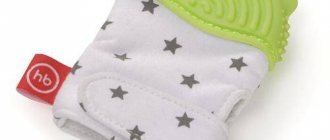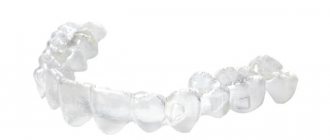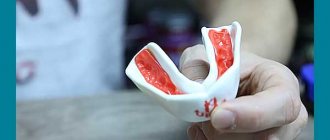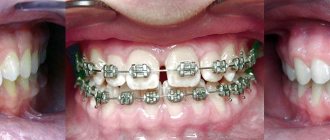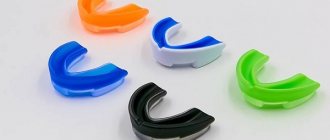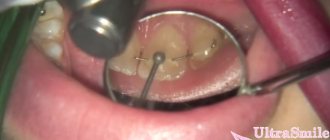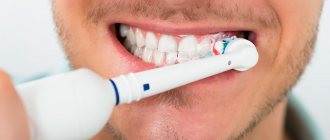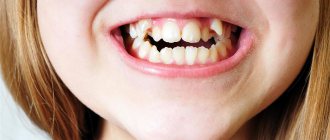It will be interesting to know how to cook a mouth guard for boxing for people who are passionate and professionally involved in this spectacular sport. Cooking lovers can relax; this material is for real athletes and boxing fans. A boxing mouth guard is a device used to protect a boxer's teeth and jaw. Mouthguards for protecting teeth come in 2 types, single and double. The single-jawed one is fixed only on the upper jaw, while the double-jawed one has a hole, which helps to facilitate the athlete’s breathing. If the preparation is carried out incorrectly, then the mouth guard will have weak teeth marks; such a device will not be able to provide good protection.
Why cook kapa?
A mouth guard is a special rubber band that a boxer holds in his mouth during a fight. This is a mandatory part of every boxer's equipment. Its main function is protection from strong impacts and various types of injuries.
There are several types of this accessory:
- single-jawed;
- two-jawed.
The most popular are the single-jawed species.
Many novice athletes do not know why to cook the product, since it is sold already in finished form. The answer to this question is very simple - thanks to the cooking procedure, the rubber takes the shape of a jaw. And this accessory should fit snugly to the jaw. The degree of protection of teeth during combat depends on this.
Design features and when to use it
In this article we will look at how to choose a mouthguard for teeth, what is necessary for its proper preparation and wearing.
In essence, a mouthguard is an orthodontic system for the dentition of the upper or lower jaw, as well as for both at once. It has several purposes, depending on the shape and type: protective, leveling, whitening and supporting.
As a rule, the structure is made of hypoallergenic and biologically compatible materials - silicone, plastic, gel-like composites. All components for the manufacture of a mouthguard must meet medical requirements, as well as quality indicators.
Where can you buy a similar design? Protective mouthguards are used to fix and protect the jaw from bruises , falls and impacts, which often occur in athletes. You should look for them in specialized sports stores. For the treatment of dental pathologies and defects (uneven teeth, yellow or gray enamel, etc.), structures are purchased in pharmacies or ordered from dentistry using an individual cast of the jaw.
Some options can be purchased in online stores, however, then you run the risk of purchasing a fake, low-quality product, or simply unsuitable for your jaw structure.
Let's consider for what specific cases a mouth guard is purchased.
- Grinding of teeth during sleep (bruxism) is an unpleasant ailment that leads to rapid wear of the dental bone, changes in bite, and damage to crowns and implants. In addition, this process is unpleasant for others. The pads help keep the jaw in the required position and prevent the enamel from touching.
- Professional athletes (especially in the field of boxing and martial arts) cannot do without mouthguards, as they regularly receive injuries to the jaw area. The product allows you to protect your teeth during a sharp closure of the jaw (fall, bruise), and also prevents them from being knocked out (impact).
- Special designs for whitening allow you to carefully lighten enamel at home, without resorting to abrasive pastes and mechanical cleaning. This option will be ideal for people with sensitive, demineralized or naturally thinned enamel.
Mouth guards allow you to straighten your teeth and even correct your bite
Cooking technology
Having chosen a mouth guard for boxing, you then need to independently carry out the procedure of cooking it, or rather boiling it. The whole process is simple to perform, just follow the following sequence of actions:
- Boil water in a kettle or ladle.
- Take two containers and pour boiling water into one, and fill the second with clean cold water.
- First place the product in a vessel with boiling water and leave for exactly one minute. There is no need to overexpose it.
- After the specified time has passed, take out the mouthguard, place it between your jaws and bite down as hard as possible. While in boiling water, the rubber will soften well and easily take on the desired shape.
- Leave the tray in your mouth for about five minutes.
- After the specified time has passed, remove the mouthguard and place it in a container filled with cold water. This is necessary for the rubber to harden.
How to put on and wear a dental guard, rules of use
To use a mouthguard for a long time and without problems, it is enough to follow simple rules of care and storage:
- prepare a well-ventilated container for it (self-respecting manufacturers supply it with the product);
- choose a storage location where direct sunlight cannot penetrate;
- use the accessory only for its intended purpose, do not gnaw or bite;
- do everything to keep the plastic clean: rinse, rinse with clean water, wipe with a lint-free cloth every time after wearing.
It is important to wear the mouth guard correctly. To do this, you need to open your mouth wide, stretching your lips to the sides, place the protection on your teeth and bite. You can use this product for no more than six months. On average, you can wear a boxing mouthguard for one season. It is not recommended to use it longer - you need to prepare a new one, as the degree of protection decreases. It will also not be possible to digest a mouth guard that has spent its allotted time, since the material will begin to crumble and deform. Manufacturers write in the instructions how long you can wear a mouth guard.
Making a dental guard yourself is easy. The main thing is to give preference to a manufacturer that has proven itself in the sports market, choose a product of the appropriate size and follow the instructions. With the right approach, a high-quality mouthguard fits perfectly and provides reliable protection.
Mouthguard fitting
As the temperature rises, the rubber softens. To fit it correctly, you need to remove it from boiling water, place it in cold water for one second and immediately fix it on the upper jaw.
There are several nuances to fitting a mouth guard:
- First the back part is fixed, and then the front;
- after the mouthguard is completely seated, it is pressed with your fingers to repeat the shape of the teeth and jaw;
- if a double-sided mouthguard is being adjusted, you cannot remove the plug from the holes until it takes the form of a bite;
- If it doesn’t work the first time, you can repeat the entire procedure.
If the mouth guard is correctly selected, it fits tightly on the upper jaw and does not require additional fixation.
There are two types of mouthguards - made of thermoplastic or silicone. The latter option does not require special adjustment and is easily fixed on the upper jaw, and no cooking is required.
Thermoplastic mouthguards are suitable for the classic brewing procedure. But you should always take into account the manufacturer's recommendations.
How to choose a mouthguard for teeth
Having chosen a mouth guard of the optimal type and size, you should check it before purchasing for:
- gender conformity: women's mouthguards are not suitable for males and vice versa;
- age characteristics: it is better for a child to purchase specialized products;
- purpose: hockey protection accessories do not meet the requirements in boxing;
- absence of odor: if you have the slightest doubt about the quality of the material, you should not purchase the product.
For boxing, it is better to choose a mouthguard of a color that cannot be confused with blood. Referees and sports traumatologists recommend not to choose or wear red-colored items, as they interfere with the visual assessment of the fighter’s condition due to their resemblance to bleeding.
Rules for preparing mouthguard
Before you start cooking kapa, you need to carefully study the recommendations that will help you avoid common mistakes. There are several important rules:
- if the product has been overcooked, it must be thrown away immediately;
- When placing a product in hot water, it must not be completely immersed - it is important that it floats on the surface of the liquid;
- When squeezing your teeth to give the mouthguard the desired shape, you cannot move your jaw; it is important to firmly fix the product and hold it.
When the mouthguard is prepared correctly, it:
- has clear prints;
- holds tightly;
- does not create discomfort during use.
Question to an expert
Which mouth guard is best for a beginner?
The ideal choice is a two-jaw mouth guard. This model is suitable for both beginner athletes and women. The product provides maximum jaw protection at the initial level of training.
Good to know
Those who are just starting to train and are faced with the procedure for preparing a mouth guard for the first time should know a few important points.
- If the burl is cooked incorrectly, do not throw it away - the cooking procedure can be repeated.
- It is not advisable to purchase cheap mouth guards, as this can have a negative impact on your oral health.
- A properly prepared mouth guard should fit tightly. If it sits poorly, it means mistakes were made during the cooking process.
- It is recommended to change the mouthguard every season, since this means of protection tends to wear out over time, which leads to the loss of its protective functions.
- There is no need to try to drown it when placing it in a bowl of hot water - it should just float there.
- After each workout, rinse the mouthguard under running cold water, after brushing with a brush and toothpaste.
- A well-ventilated special container is required to store the mouth guard.
- Do not leave it in the sun - direct exposure to sunlight can lead to deformation.
- If the mouthguard is overcooked, then nothing can be done with it.
Boxing is a rather dangerous sport, as injuries are inevitable during training and competition. But an athlete should think first not about his career, but about his health. A correctly selected and properly prepared mouthguard will preserve the integrity of the teeth, tongue and soft tissues of the face.
Features of mouthguard care
This is an important part of using this accessory. It’s easy to care for your mouth guards by following these tips:
- need to be stored in a special container that will protect from dust and dirt;
- after the mouthguard has been removed from the jaw, it must be rinsed with plenty of running water;
- if necessary, it is allowed to periodically clean the product with toothpaste and a brush;
- Boiling water cannot be used for sanitization; for this purpose, special pharmacological agents are used, which are available in a wide range in pharmacies.
Choosing protection for a child
A children's mouthguard is different in size from an adult's. Manufacturers produce two types of earbuds.
Children's – up to 10 years old, for a child under 140 cm tall. Adult – over 10 years old, for an athlete taller than 140 centimeters.
If the mouthguard turns out to be large, then the size is adjusted after “trying on”. Cut the long ends of the plate with a sharp knife or blade. If necessary, the protector can be “cooked” again.
The OPRO company produces special mouth guards for children . Professional orthopedists take part in the development of new models.
If your child has braces, purchase a specialized mouth guard. It’s called “for braces.”
Common mistakes
The process of brewing burls does not always go without problems. It is difficult to cook a mouthguard incorrectly, but this happens when the product is placed in water at the wrong temperature;
- the accessory becomes hard when it is placed in cold or insufficiently heated water, as well as if it is kept at high temperatures for a long time (about 100 degrees Celsius);
- pimples appeared - the product was in boiling water for too long;
- if a thin and cheap burl is brewed, it can literally melt; to prevent this from happening, you must strictly adhere to the established temperature conditions and the time the product is in the water.
How are aligners different from braces?
Both mouthguards and braces are used to correct bites in adults and children, but these designs have significant differences that determine both the disadvantages and advantages of each of them. To make it easier for patients to navigate in choosing the appropriate correction method, below is a table with a comparative analysis of both systems.
Aligners or braces
Table. Mouth guards and braces: comparison.
| Characteristics | Mouthguards | Braces |
| The effectiveness of bite correction | Effective only for minor bite pathologies. | Can be used for severe deformation of the dental system (including severe and complicated cases). |
| Wearing period | From 8-10 months to 2 years. | From 1 year to 2-3 years. |
| Possibility of use in childhood | Can be used in childhood (treatment of bruxism using silicone teethers is especially common). | It is acceptable to use in children over 5 years of age, but the possible risks of enamel damage must be taken into account. |
| Visibility to others | Mouthguards are made of transparent silicone or bioplastic and are practically invisible on the teeth, which makes their use more comfortable and provides psychological comfort to the patient. | Vestibular braces, which are installed on the front surface of the teeth, are clearly visible to others. If these are ordinary metal braces, wearing such a design can cause emotional distress for the patient (especially children and adolescents). |
| Comfort to use | Adaptation to the aligners usually occurs almost immediately after installation. In rare cases, this process may take 3-5 days. | Nagging pain and discomfort when wearing braces can appear at any time as the teeth gradually shift. The duration of such periods can range from 2-3 days to several weeks. |
| Degree of gum trauma | Due to the soft materials, the mouthguards practically do not injure the mucous membranes and soft tissues of the oral cavity. | Braces can have a destructive effect on tooth enamel and damage the mucous membranes of the tongue, lips and gums. |
| Possibility of removal without visiting the dental office | Maybe. | Impossible. |
| Ease of hygienic care | The mouthguard can be easily removed from the mouth to clean the teeth and the structure itself, which ensures a high level of hygiene during orthodontic treatment. | The level of hygiene when using brace systems is quite low due to the inaccessibility of surfaces covered with orthodontic brackets and locks. |
| Price | From 6 to 15 thousand rubles for one mouth guard. | From 70,000 rubles. |
At first glance, it may seem that treatment with mouth guards is a cheaper option compared to braces, but this is not the case. Aligners must be changed regularly, and one set can contain up to 25-30 drops per course of treatment. The total cost of the course is usually more than 200 thousand rubles.
Diagram of the results of treatment with mouthguards
We invite you to read: Chronic periodontitis treatment - Dr. Dent
Varieties
All mouthguards for adult patients are made of high-tech plastic or silicone. They are usually divided into three types:
- Standard (standard) models that are produced without taking into account the structural features of the jaw of a particular patient. They cost much less, but can cause discomfort during operation.
- Individual products. They are created based on a cast of the jaw. They are extremely convenient and guarantee quick results.
- Thermoplastic. Such mouthguards take the shape of the jaw after installation. This method requires constant monitoring by the attending physician, otherwise there is a risk of incorrect fixation. This can lead to severe discomfort. It is also important to pay more attention to the installation of such mouth guards for young children, this is due to the fact that their jaw is still poorly formed.
Mouthguards are usually divided into several more varieties, taking into account what time of day they need to be worn. Night guards have a fixing and preventive effect; they are prescribed after treatment with braces. Another option is 24-hour mouth guards. They should be worn for at least 20 hours a day. Their main purpose is to straighten teeth and correct minor malocclusions.
Causes of deformation
Reasons for the development of malocclusion:
- genetic factor;
- in childhood - improper attachment to the breast, bad habits in the form of finger sucking, pacifiers, too early removal or loss of milk teeth;
- inappropriate jaw and teeth sizes, for example, teeth that are too large relative to the size of the jaw;
- facial injuries or chronic diseases that provoke respiratory dysfunction;
- strong pressure from the jaw muscles, as a result of which the lower jaw shifts forward;
- deficiency of hormones produced in the thyroid gland.
